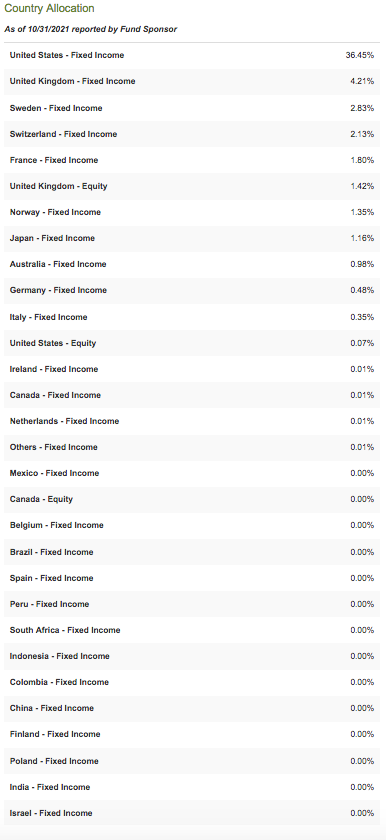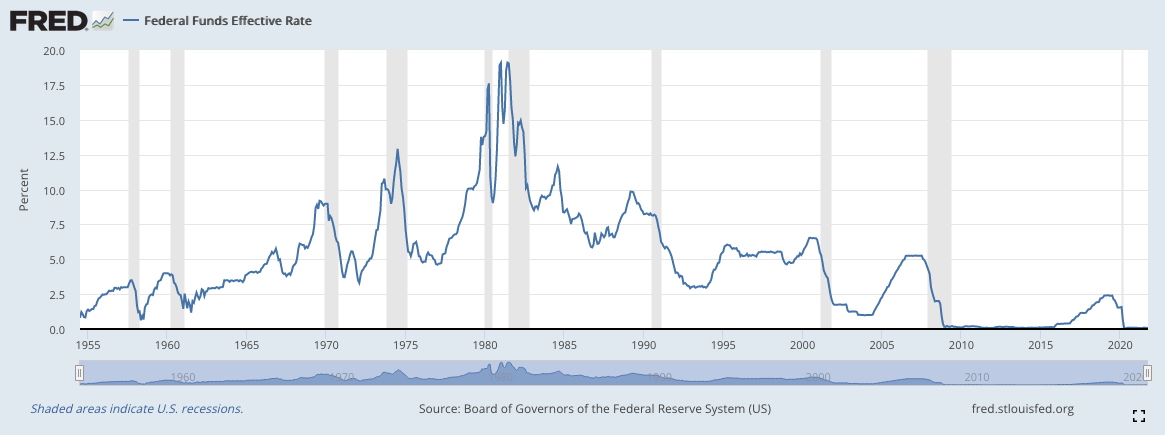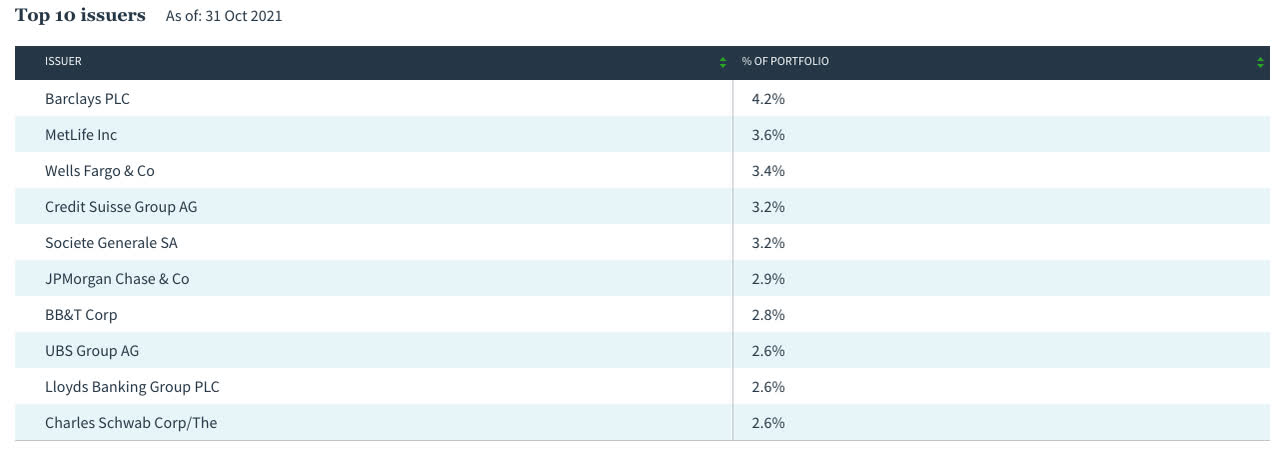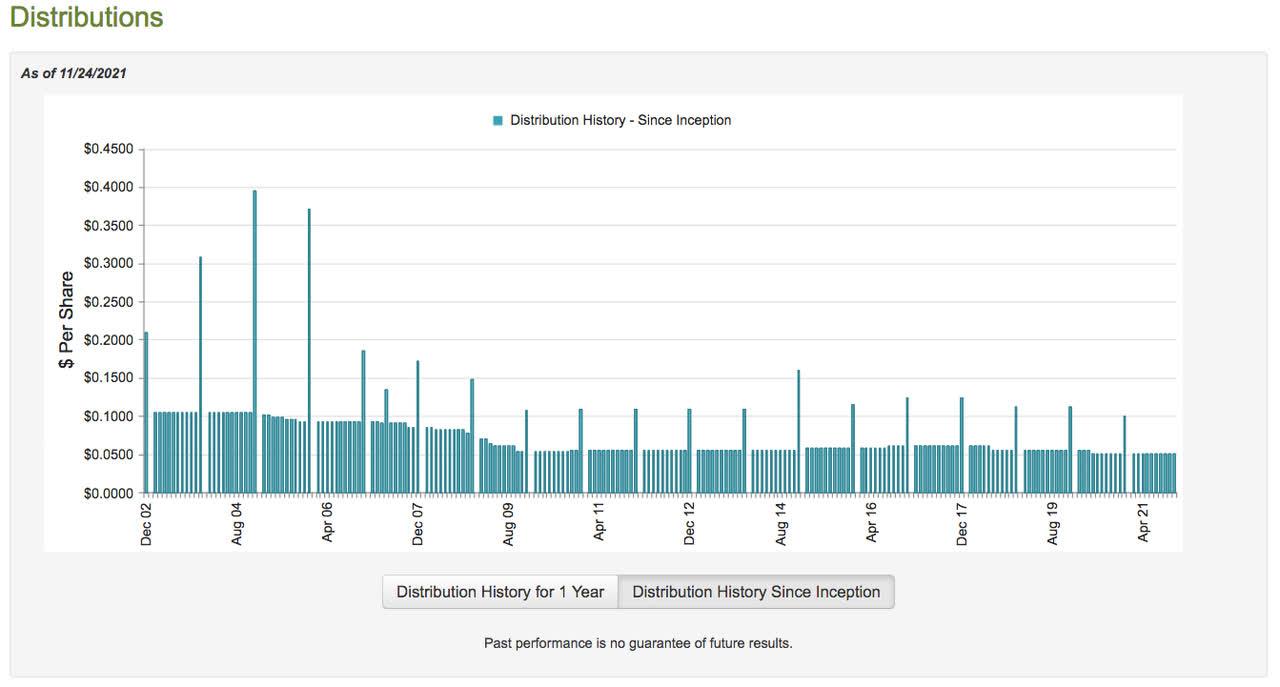JPS: A Great Income Fund To Help You Beat The Fed
One of the biggest problems facings investors today is an inability to generate any sort of income off the assets in their portfolios. This is an especially big problem for retirees because they are highly dependent on their portfolios to generate the income that they need to pay their bills and finance their lifestyles. The reason for this problem is the policies that have been pursued by the Federal Reserve over the years since the financial crisis and unfortunately, it does not appear likely to change anytime soon. Fortunately, though, there are some things that an investor can do to get around this problem. One of the best of these options is to purchase shares of an income-focused closed-end fund. This is because these options provide us with an easy way to obtain a professionally managed portfolio that can in many cases deliver a higher yield than almost anything else in the market. In this article, we will discuss the Nuveen Preferred and Income Securities Fund (JPS), which currently yields 6.47%. I have discussed this fund before but many months have passed so a lot has changed. As such, this article will focus specifically on these changes as well as provide an update of the fund’s financial performance.
About The Fund
According to the fund’s website, the Nuveen Preferred and Income Securities Fund has the stated objective of providing a high level of current income while still attempting to ensure the preservation of capital. This is certainly not unusual as most fixed-income funds seek to generate current income while still attempting to preserve capital. This is something that should appeal to many retirees because they need to preserve principal as it can be difficult for a retiree to obtain more principal and they also have a need to produce income. In order to achieve its objective, the fund invests in a portfolio of preferred stock and other income-producing assets, such as bonds. This is typical for many fixed-income funds as preferred stocks tend to have higher yields than bonds but bonds are also somewhat safer than preferred stocks. This is because bond investors must be paid back before the preferred stockholders are eligible to receive anything in the event of liquidation. In addition, it is mandatory for a company to make bond payments but it does not technically have to make preferred stock payments but most companies never skip them. Thus, both securities have long been favorites of retirees due to their safety and the income that they provide.
A look at the largest positions reveals a great many companies that are likely to be familiar to most readers:
(Click on image to enlarge)
Source: Nuveen
One of the first things that most readers will likely note is that the majority of these companies are banking firms. This is not atypical for a preferred stock fund. This is because of international banking regulations. Specifically, these regulations require a bank to maintain a certain proportion of its assets in the form of Tier one capital. Tier one capital refers to the proportion of its assets that are not also a liability to someone else (such as a depositor). Whenever these regulations require that a bank raise its Tier one capital, it can do so by either issuing preferred or common stock. The bank will often opt to do this by issuing preferred stock in order to avoid diluting the common stockholders. A firm in other industries does not have to contend with these regulations so they often opt to issue cheaper debt when they need to raise capital. Thus, banks become the largest issuers of preferred stock in the market by default.
Another thing that we notice is that the fund’s portfolio holdings are exactly the same as the last time that we looked at the fund, although the weightings are not exactly the same. This suggests that the fund does not do very much trading. This is indeed the case as the fund’s 14.00% annual turnover is one of the lowest that I have ever seen. Generally speaking, we like to see a low turnover because it costs money to trade excessively. Thus, all else being equal, a low turnover means that more money is available to make its way down to the shareholders. This is one of the reasons why index funds tend to be popular as their low trading costs and other low expenses help them perform better than most funds. With that said, low expenses do not guarantee higher performance but a high turnover does make it more difficult for the fund to outperform.
One of the things that many readers are likely to notice is that the largest positions list includes banks from all over the world. Indeed, the Nuveen Preferred and Income Securities Fund is a global fund and purchase assets from multiple nations. We can see this quite clearly here:
(Click on image to enlarge)

Source: CEF Connect
This is nice to see because of the protection that it provides us against regime risk. Regime risk is the risk that some government or other authority will take some action that proves to have an adverse impact on a company that we are invested in. We saw a great example of this risk back in January when the incoming Biden Administration unilaterally canceled the permits for the construction of the KeystoneXL pipeline and caused all of the money invested by TC Energy (TRP) into its construction to be wasted. The only real way to protect ourselves against this risk is to ensure that our assets are invested in many different nations. This is a strategy that many funds use but very few have an allocation to the United States that is under 50%. The United States though actually only accounts for about 40% of global market capitalization so this fund is very much in-line with its representation in the global economy. This is something that we very much like to see.
The Challenge For Income Investors
As mentioned in the introduction, the biggest problem facing investors today is an inability to generate any significant amount of income off the assets in their portfolios. This is a particularly big problem for retirees because they are highly dependent on the assets in their portfolios to generate the incomes that they need to pay their bills and finance their lifestyles. The reason for this problem is the policies that have been pursued by the Federal Reserve over the past decade. Specifically, this refers to the central bank’s control over the federal funds rate. The federal funds rate is the rate that the nation’s commercial banks charge each other for overnight loans. As we can see here, the Federal Reserve cut this rate to all-time lows following the collapse of Lehman Brothers in 2007 and kept it there for more than a decade until the Trump Administration. Although the bank did attempt to raise the rate at that time, it still remained low by historical standards. The outbreak of the COVID-19 pandemic changed all this and the bank once again cut the rate to all-time lows, where it remains today:
(Click on image to enlarge)

Source: Federal Reserve Bank of St. Louis
As of the time of writing, the federal funds rate sits at 0.08%. This is slightly lower than where it was the last time that we looked at the fund but the difference is insignificant. The reason that this is important is that this rate influences the rate of everything else in the economy. This is the reason why mortgage rates are currently so low. It is also the reason why savings accounts and certificates of deposit are yielding essentially nothing. This has thus rendered traditional retirement income strategies such as laddering certificates of deposit basically useless. This has thus forced retirees to pursue other options to generate the income that they need.
The primary option that they have chosen to pursue is to move their money into risk assets such as stocks and bonds. This influx of new money into the capital markets is one of the reasons why we have seen such tremendous asset appreciation in the markets over the past several years. This has certainly been good for capital gains but it has also had the effect of suppressing yields. We can see this quite clearly by looking at the S&P 500 (SPY), which is 1.21% as f the time of writing. The bond market is not really any better as the iShares Core U.S. Aggregate Bond ETF (AGG) only yields 1.82% as of the time of writing. At these yields, even a $1 million portfolio would generate less income than a minimum wage job in the absence of asset appreciation, which is not guaranteed.
The Nuveen Preferred and Income Securities Fund is able to do much better than this due to the assets that it invests in and its ability to use certain strategies that are unavailable to other types of funds. As mentioned in the introduction, this fund currently yields 6.47%. At this yield, a $1 million portfolio would generate $64,700 in annual income. This is a much closer level to what a retiree would need to live a reasonable lifestyle in most areas of the country, particularly when combined with Social Security.
Leverage
One of the strategies that the fund uses to boost its overall portfolio yield is leverage. Basically, the fund borrows money in order to purchase preferred stock or other fixed-income products. As long as the rate that it pays on the borrowed money is lower than the yield that it receives from the purchased assets then this works quite well to boost the yield of the overall portfolio. As we have seen, interest rates are currently incredibly low and when we consider that the fund can borrow at institutional rates (which are lower than retail rates), we see that this is likely to be the case. Unfortunately, the use of debt is a double-edged sword because debt boosts both gains and losses so we want to ensure that we are not being exposed to an excessive amount of risk. In a previous article, I stated that I do not like to see a fund have leverage above a third as a percentage of assets for this reason. As of the time of writing, the Nuveen Preferred and Income Securities Fund has a leverage ratio of 36.74% of its assets. Thus, this fund is a bit above the level that I prefer but given the relatively safe assets that it invests in, this is probably fine. Overall, the fund is striking a reasonable balance between risk and reward.
Distribution Analysis
As mentioned earlier, the primary objective of the Nuveen Preferred and Income Securities Fund is to provide its investors with a high level of current income. As such, we might expect that it pays out a regular distribution to its investors. This is indeed the case as the fund currently pays out a $0.5050 per share monthly ($6.06 per share annually) distribution, which gives the fund a 6.47% yield at the current price. This distribution has varied quite a bit over the years with the exact amount generally being a function of interest rates:
(Click on image to enlarge)
Source: CEF Connect
This variable distribution does make the fund somewhat less appealing to investors seeking a steady and secure source of income to provide for their needs. However, the fund is still certainly much more attractive than a bank account right now. One thing that may help increase its appeal though is that its distributions are entirely classified as dividend income with no return of capital component:
(Click on image to enlarge)

Source: Fidelity Investments
The reason why this may be appealing is that a return of capital distribution can be a sign that the fund is returning the investors’ own money back to them. This is obviously not sustainable over any sort of extended basis. There are other things that can cause a distribution to be classified as a return of capital however, such as the distribution of unrealized capital gains. We seemingly do not have to worry about that here, though, but as I have pointed out in the past it is possible for these distributions to be misclassified. Thus, it is important for us to investigate exactly how the fund is financing these distributions so that we can see how sustainable they are likely to be.
Fortunately, we have a reasonably recent report that we can consult for this purpose. The fund’s most recent financial report corresponds to the full year period ended July 31, 2021. As such, it will give us a good idea of how well the fund performed over the incredibly strong market that we have seen during most of the past year, although it will not include data from the past couple months. During this full-year period, the fund received a total of $23,809,565 in dividends and another $138,447,588 in interest from the assets in its investments. When we combine this with a small amount of income from other sources, the fund brought in a total of $162,583,922 in income during the year. It paid its expenses out of that, leaving it with $127,664,148 available for the investors. This was enough to cover the $123,552,214 that it actually paid out over the period. In addition to this, the fund also produced positive net realized and unrealized capital gains during the period, although these were not necessary to support the distribution. Overall then, the fund certainly managed to sustain its income during the period.
Valuation
As is always the case, it is critical that we do not overpay for any asset in our portfolios. This is because overpaying for any asset in our portfolios is a surefire way to generate suboptimal returns off of that asset. In the case of a closed-end fund like the Nuveen Preferred and Income Securities Fund, the usual way to value it is by looking at a metric known as the net asset value. The net asset value of a fund is the total current market value of all of the fund’s assets minus any outstanding expenses. It is therefore the amount that the investors would receive if the fund were immediately shut down and liquidated.
Ideally, we want to purchase shares of a fund when we can acquire them at a price that is less than net asset value. This is because such a scenario implies that we are acquiring the fund’s assets for less than they are actually worth. That is, fortunately, the case here. As of November 24, 2021 (the most recent date for which data is currently available), the fund had a net asset value of $9.65 per share but only trades for $9.28 per share. This gives the fund a discount to net asset value of 3.83%, which is certainly a more attractive price than the 1.33% premium that the fund has had over the past month. Thus, the fund’s price certainly looks very attractive at the present level.
Conclusion
In conclusion, investors continue to struggle to generate the income that they require to support themselves in today’s environment. The Nuveen Preferred and Income Securities Fund offers a fairly attractive way to solve this problem given its high yield and relative safety of its assets. The fund also has a reasonably attractive valuation at its current level. Overall, this one looks like a winner today.
Disclaimer: All information provided in this article is for entertainment purposes only. Powerhedge LLC is not a licensed financial advisor and no information provided should be construed as ...
more





Hasn't beat the fed since ive owned it!